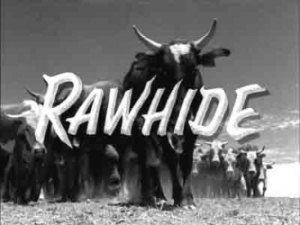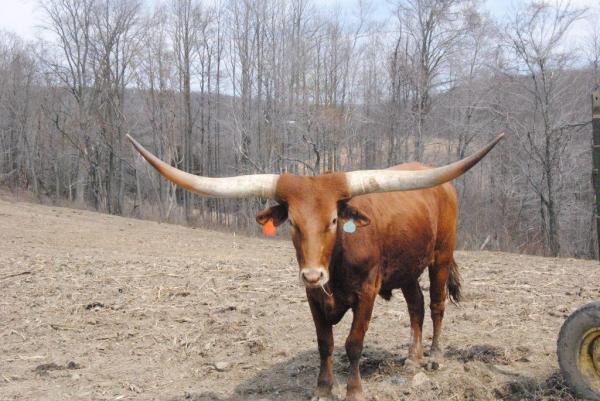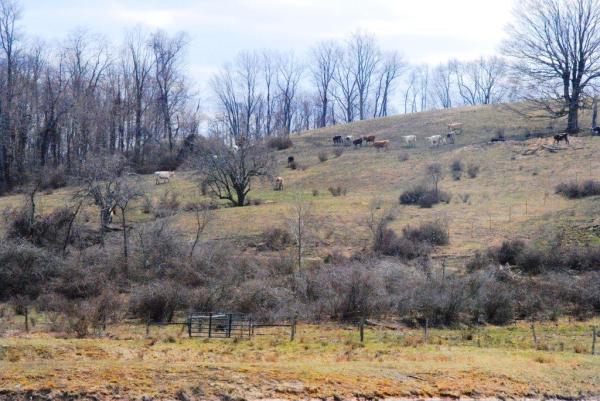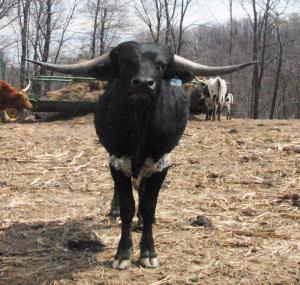Mountain Diamond Ranch
Born in the 1950s, it seems that many of the tv shows when I was young were about the West and cowboys. Rawhide is a good example; the weekly story generally revolved around a trail ride, herding cattle to market. It didn’t hurt that the young herder, Rowdy Yates, was Clint Eastwood, but I will disappoint you if you think this is about him. It’s not. It’s about the cattle.
The southern Plains were settled in the 1830s and as the demand for beef grew along the eastern seaboard, ranchers started to drive their cattle to market. Early trails lead to New Orleans where the animals would be shipped but when the railroads started crossing the country, trail drives lead north. For example, the Chisholm Trail lead north from the vicinity of Fort Worth, Texas, across Indian Territory (Oklahoma) to the rail-head at Abilene, Kansas. It was about 520 miles long and avoided settlements where the local farmers were concerned about loss of forage for their own animals and Texas tick fever. 
The typical drive comprised 1,500–2,500 head of cattle. In addition to the trail boss (perhaps the owner or a hired drover), ten to fifteen hands were needed. Each cowboy had a string of five to ten horses which were tended by the horse wrangler. The cook drove the chuck wagon.which carried the bedrolls; tents were considered excess luxury. The men drove and grazed the cattle most of the day, herding them by relays at night. Ten or twelve miles was considered a good day’s drive, as the cattle had to thrive on the route. They ate grass; the men had bread, meat, beans with bacon, and coffee. Wages were about $40 a month, paid when the herd were sold.

The predominant cattle breed on these drives was the Texas Longhorn. Adaptable to almost any climate, the Texas Longhorn has a variety of colors with few that look alike. Similar looking calves are called produce of dam or get of sire, depending on which animal they resemble. Horn length can be as short as four feet but some steers have horns that reach as much as nine feet. Curvature of the horn also varies.
Barb and Dave Miller own the Mountain Diamond Longhorn Ranch on about 100 acres near Tunnelton in Preston County. Dave grew up on that land and met Barb at Fairmont State. In 1999 the house was built, the land was fenced and they started raising Longhorns. The decision to acquire Longhorns was pretty much coincidental with someone they knew having some that needed a new home. They very much enjoy the breed and I could tell, as Barb drove me around, that the cattle are very used to them. They currently have about 80 head of cattle, mostly Longhorns but also some Corriente and some Watusi. Two oxen have been trained to the yoke.
 Grass fed with grain available, including corn that the Millers grow, the breed takes three to four years to grow full size. Some calves are sold for breeding stock; others are for ropers. The horned breeds are needed for rodeo action and the calves provide practice. Mountain Diamond beef is also sold at several farmer’s markets in the Morgantown area and at the State Fair. Barb believes the meat is sweeter than other, more commercially marketed beef, and very tender.
Grass fed with grain available, including corn that the Millers grow, the breed takes three to four years to grow full size. Some calves are sold for breeding stock; others are for ropers. The horned breeds are needed for rodeo action and the calves provide practice. Mountain Diamond beef is also sold at several farmer’s markets in the Morgantown area and at the State Fair. Barb believes the meat is sweeter than other, more commercially marketed beef, and very tender.
Several dug ponds hold flow from three sweet natural springs that run well, even in dry summers. A solar panel provides power to the pump to get water to the gardens. The Millers lost two high tunnels recently to the Derecho and also heavy winter snows. They are considering how to replace those garden areas. 
Thank you for this nice post . I love the pictures you chose .
There were so many! LOL I need to email them to you